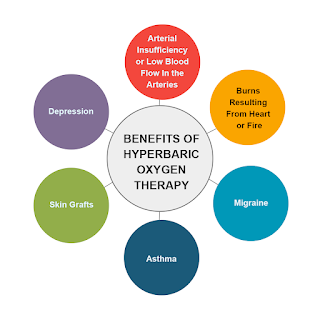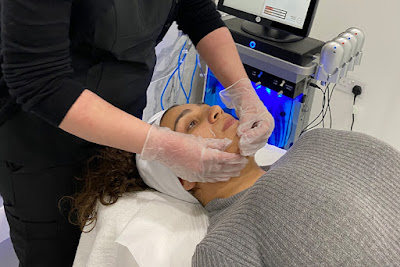Oxygen Therapy With Essential Oils
Essential oils are a great way to lift mood, relieve body aches and improve the sleep cycle. Oxygen therapy is a great way to maximise the anti-ageing capacities of the body. This article demonstrates various ways in which essential oils help in oxygen therapy and improving physical and mental health.
Lavender is not irritating with oxygen therapy Some oil manufacturers stress that lavender should only be used when diluted on the skin. It is not meant to be used if this is true, but in any case, it is advisable to check with the manufacturer of your particular oil to be sure. Lavender may not irritate, but some oil suppliers say it should be applied to the skin when diluted.
Breathing is a mixture of peppermint and eucalyptus that, according to studies, increases oxygen saturation. Ravensara is a unique oil extracted from a shrub in Madagascar and used to relieve all kinds of diseases.

The oil is also effective in removing nasal congestion, which helps you breathe in more oxygen. A study from 2013 suggests that a healthy person who uses peppermint oil helps relax the muscles of the windpipe, also known as the bronchial muscles. This could explain why it can make it easier for people who cough to breathe.
Lavender oil and frankincense oil can be used as additives in bathrooms or showers. Lavender oil is an oil that is beneficial for COPD sufferers as it acts as an antioxidant that helps the body fight the growth and development of the disease. It is another oil that can be beneficial for COPD patients as it works with antioxidants to help the body fight the emergence and growth of COPD.
Essential oils can alleviate symptoms of chronic obstructive pulmonary disease (COPD) and support other therapies. They offer natural healing properties that can alleviate COPD symptoms and improve your healthy breathing. These oils can be applied to wounds to reduce infections and the growth of bacteria and fungi.
Eucalyptus oil has been used for centuries as a home remedy against respiratory diseases. A study published in the Alternative Medicine Review found that the most important oils, called eucalyptol and cineol, have antimicrobial effects that fight the pathogenic bacteria.
This means that using eucalyptus oil can destroy harmful bacteria without exacerbating COPD symptoms. The researchers have found that Eucalyptus is an essential oil that can be used as a complementary human treatment for COPD. Recent research suggests that EucalyptusS oil may be useful as a long-term treatment for asthma and to control COPD.
Eucalyptus is not only helpful for breathing but also has to purify properties that can help relieve tension. It contains eucalyptol, Alpha-terpineol, which makes it an ideal oil for open airways and a feeling of clear breathing. It can also be used to repel insects by mixing a few drops with a carrier oil, castor oil or Argan oil to open the skin so you can avoid mosquitoes.
Lemon oil dissolves mucus because it dilutes the mucus in the airways. Lavender oil can be applied directly onto the skin for a soothing effect but is best diluted with a carrier oil. Like eucalyptus, lavender oil should be applied with frankincense oil, which must be mixed with the carrier oil to avoid too much oil.
Crushed tea tree leaves are inhaled to treat coughs and colds by Aboriginal Australians and inhaling tea tree oil can help to alleviate the effects of coughing. Over-the-counter fumes and chest bugs are on the market to suppress coughs, some of which contain the oil.
Over-the-counter steam or breast creams marketed to suppress coughing often contain an oil with a key compound called eucalyptol or cineol. For example, research published in Advances in Therapy indicates that eucalyptus oil compounds (-1,8-cineol) have antioxidant and anti-inflammatory properties which may be helpful in treating respiratory diseases such as COPD.
You can combine several recommended essential oils for COPD treatment such as citrus oil and eucalyptus oil to maximize the benefits of treatment. The correct application of these oils should be duly considered, as the use of diluted oils on the skin can be different from the oral application. The use of an oil diffuser is not the same as topical skin application or oral treatment.
Although some of the active ingredients contained in essential oils may benefit people with COPD by removing mucus from the lungs and opening airways, there is insufficient evidence to support their use as a cure or treatment.
In aromatherapy circles, it is widely believed that the main therapeutic benefits of essential oils originate from the fact that they are oxygen-rich and transport oxygen to the body cells and tissues, thereby improving our health.
When essential oils are introduced into the bloodstream, they increase blood circulation and oxygen supply. Every time you inhale or apply essential oils to your body, enrich your body with the oxygen you need to remove toxins and ward off pathogens. This is why daily use of essential oils can help develop a superior immune system and why people who use essential oils several times a day do not experience disease or illness.
Every cell in the body needs oxygen to function and survive. The blood transmits oxygen to the cells but also absorbs carbon dioxide, a waste product of the natural processes of the body, which takes it back to the lungs. The carbon dioxide returns to oxygen, is exhaled and leaves the body.



Comments
Post a Comment